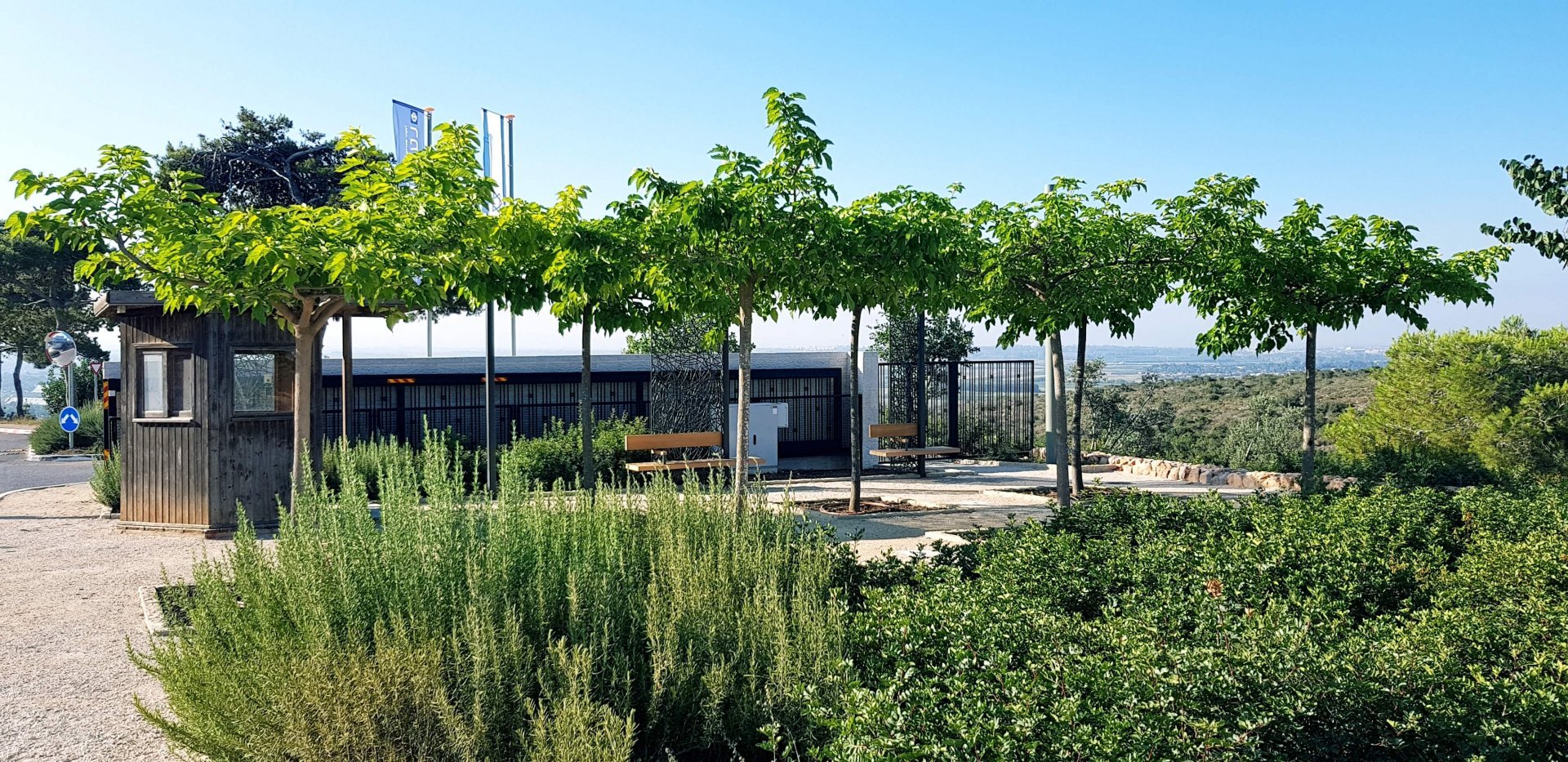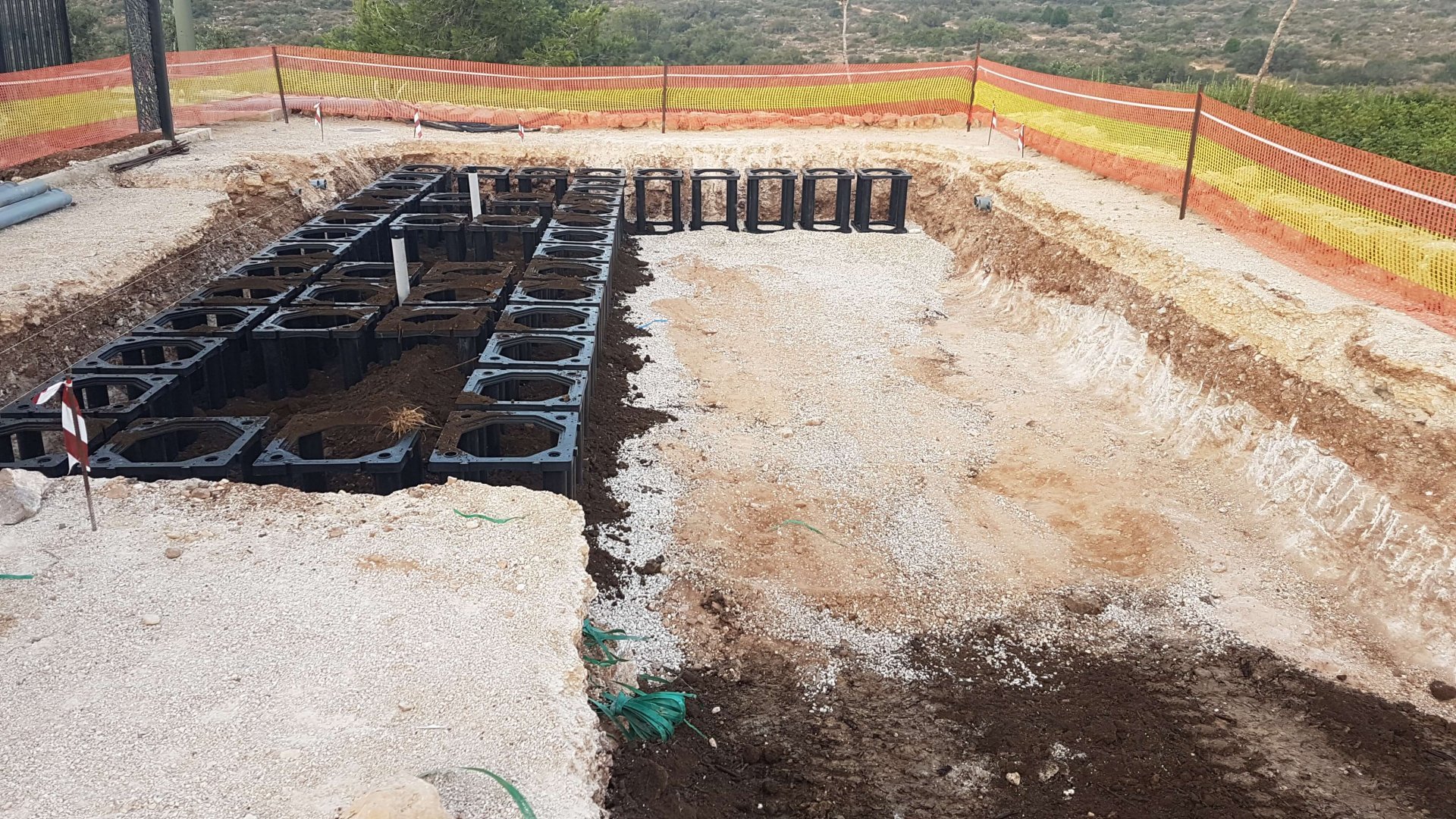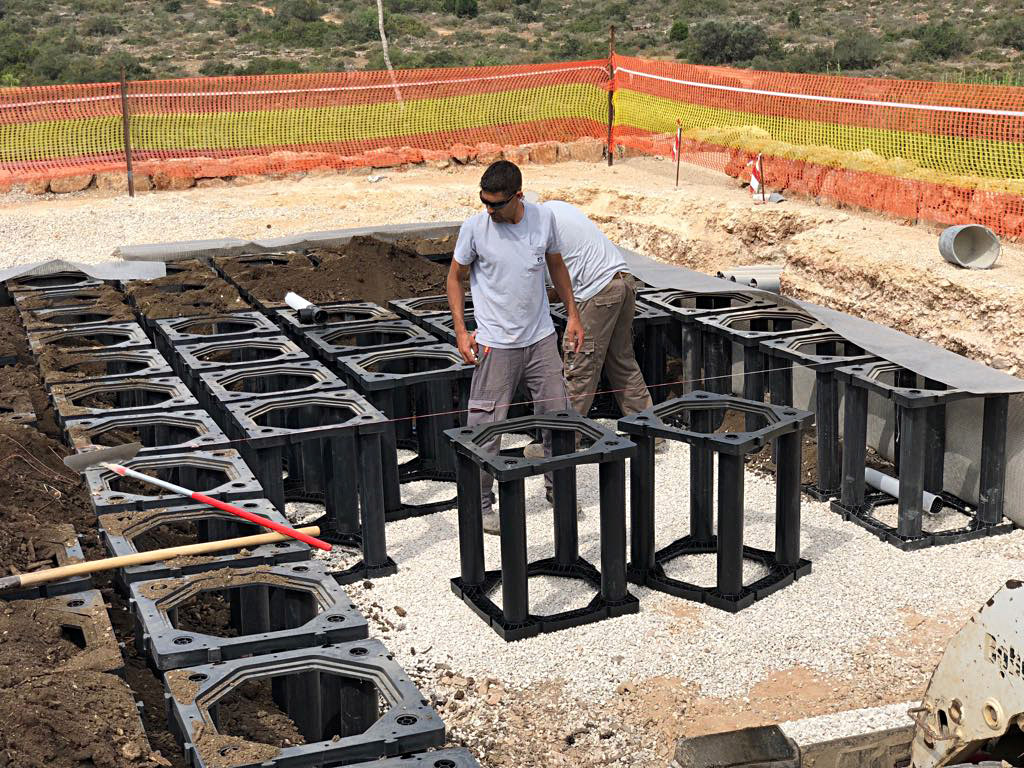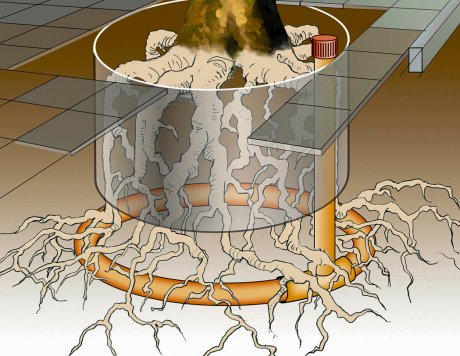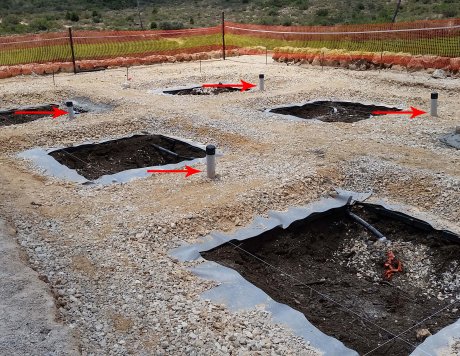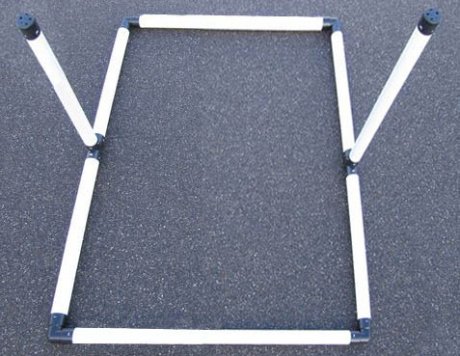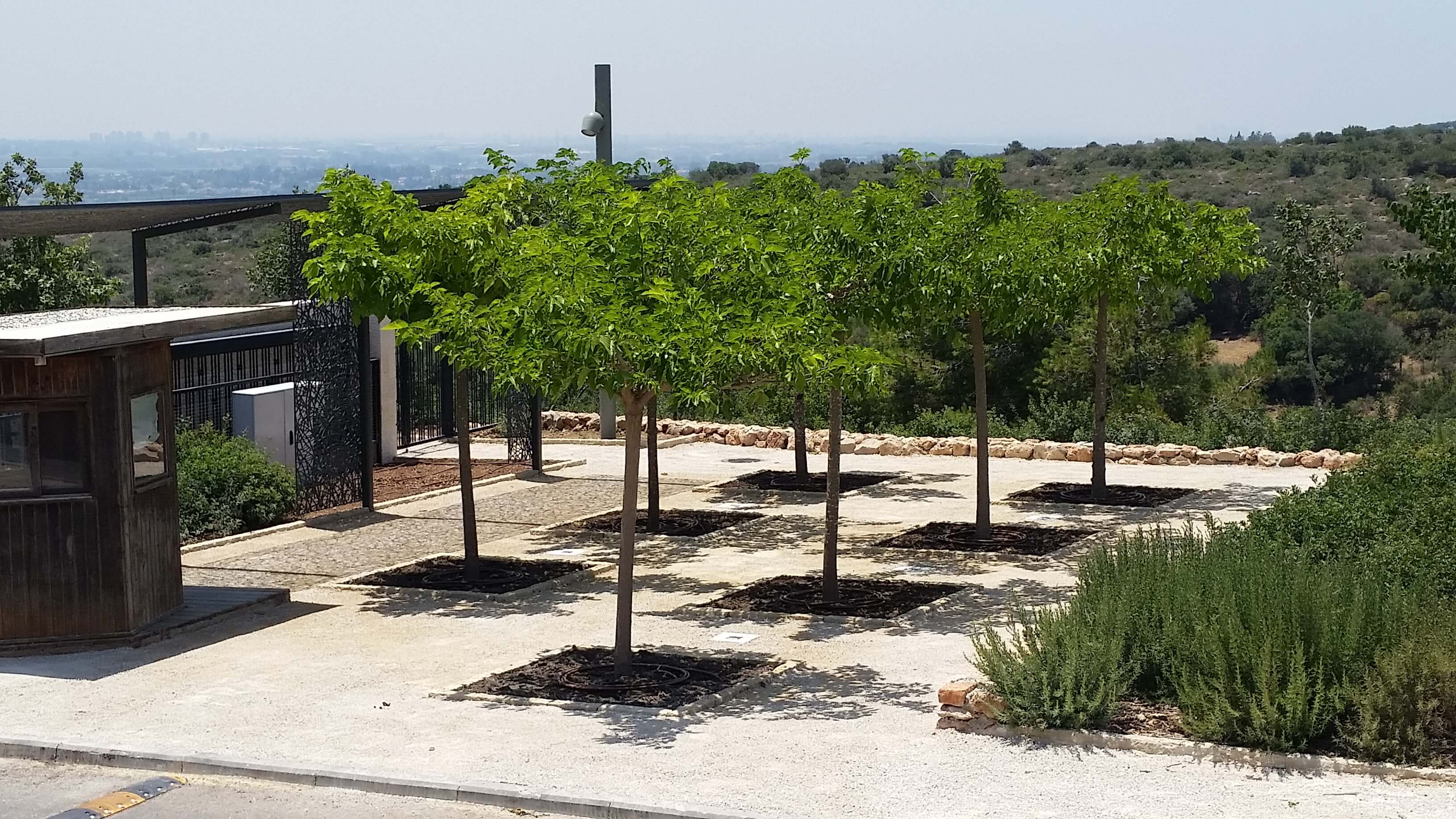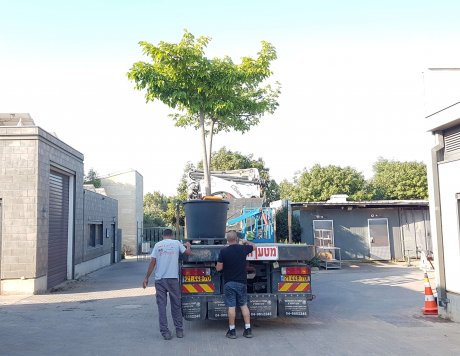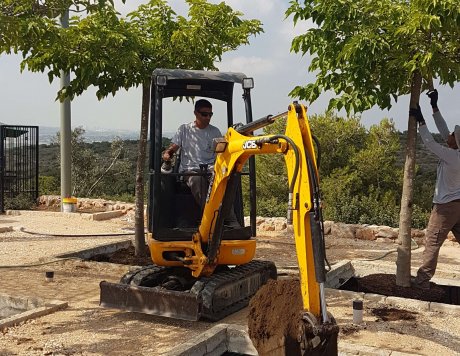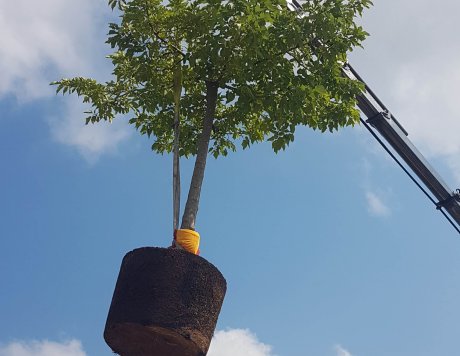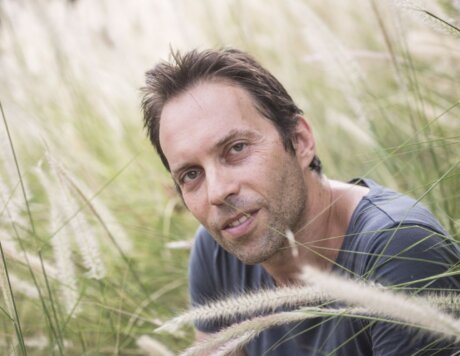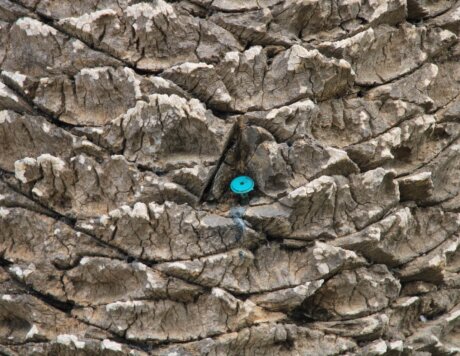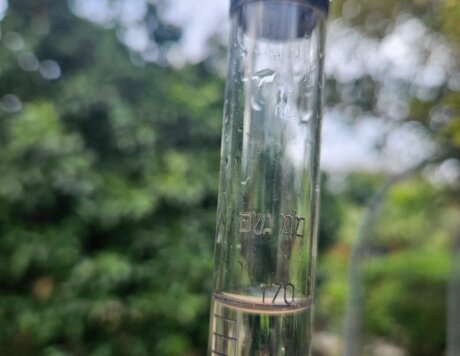It all begins with the pit – the trees’ new home
In order to plant trees, a 1.3-meter-deep pit over an area of about 90 square meters was dug into the soil – this provides a volume of almost 130 cubic meters to 7 trees! For comparison, let’s take for example ornamental trees that the local council plants in the city’s streets; a pit with a maximum volume of 1.5 cubic meters is dug for each tree. The life time of such trees is between five and seven years. The pit that was dug for the mulberry trees, together with laying down infrastructure, were intended among other things to ensure full, long lives, so that our grandchildren will also be able to benefit from them.
And there is also internal padding
The base of the pit was padded with a layer of gravel on which we placed “TreeParker” bases made from recycled plastic, which were imported especially from GreenMax TreeBuilder in Holland by the Israeli representative, Ganron, in Atlit. These cells can be filled with planting substrate and can also be covered with tiles or other covering, and they are


